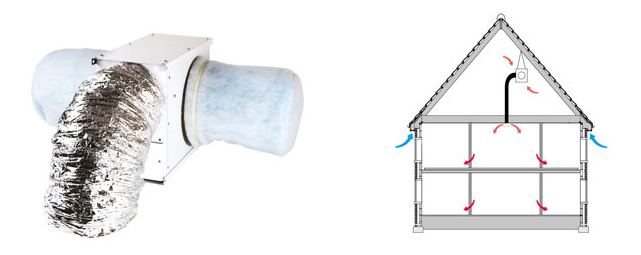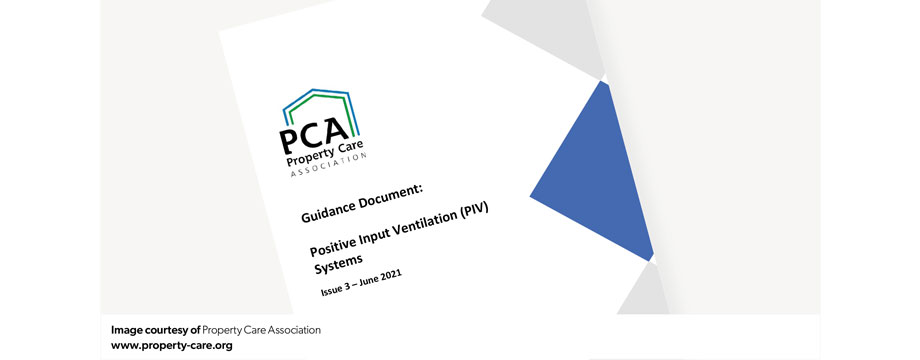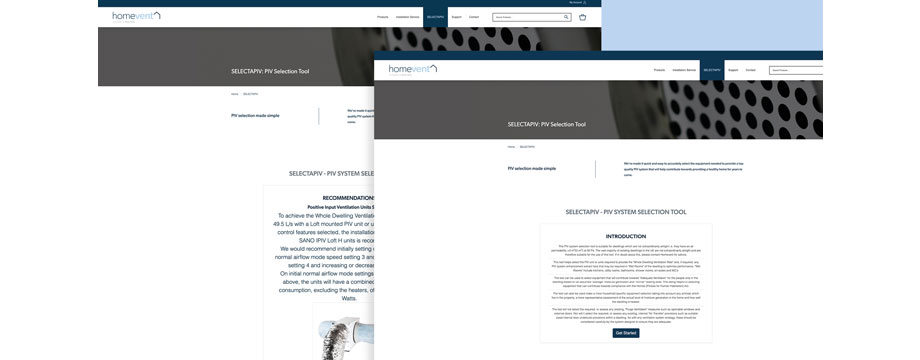Positive Input Ventilation (PIV) is a tried and tested method of dealing with condensation and mould in the UK’s housing stock. It is estimated that PIV units have been installed in over one million homes since it was first introduced back in the 1970’s. Tens of thousands of PIV units continue to be installed every year and is often the first choice of ventilation for many landlords wishing to provide adequate ventilation for their tenants.

Despite their popularity and proven efficacy, detailed independent guidance on the correct design, product selection, installation and commissioning of PIV systems is very limited. The fact that PIV is not, and never has been, one of the “systems” included in “Approved Document F: F1 Means of Ventilation” remains a mystery to many who have witnessed first-hand how it has performed better than other systems which are. The only independent, peer reviewed, guidance document which does exist is produced by the Property Care Association, titled “Guidance Document: Positive Input Ventilation (PIV) Systems, Issue 3 - June 2021” and is available, along with many other excellent guidance documents, to download for free from their website www.property-care.org.

Paul Harrington, Head of Sales at Homevent and someone with decades of experience in resolving residential ventilation related problems, explains all the factors which need to be taken into account when correctly designing a PIV system which will perform well and stand technical scrutiny.
“Too little ventilation can lead to condensation, mould and poor indoor air quality while too much can result in unnecessarily high running costs and draughts for occupants. What we need is adequate ventilation or, as it is referred to in the Government’s advice to tenants and landlords on the Homes (Fitness for Human Habitation) Act, “enough ventilation”. It is vital to calculate the “Whole Dwelling Ventilation Rate”, which is the amount of air to be supplied to the property by a PIV system as accurately as possible. This should be calculated taking into account the floor area of the dwelling, its thermal efficiency, the number of occupants and pets, the level of moisture production within the property and how well the home is heated.
“The layout of the property also has to be considered and PIV enhancement extract fans may be required in “Wet Rooms” such as kitchens, bathrooms, utility rooms and toilets in addition to a PIV unit or units to optimise system performance.”
To help those designing PIV systems, Homevent has launched what is thought to be the UK’s first online, freely accessible PIV design tool called SELECTAPIV. This easy-to-use tool asks the user a number of questions about the dwelling, the occupants and the type of PIV unit they require. At the touch of a button it accurately selects the PIV unit or units from Homevent’s SANO range required to provide the “Whole Dwelling Ventilation Rate” and, if required, any PIV system enhancement extract fans from Homevent’s MORI range which may be required in “Wet Rooms” of the dwelling to optimise performance. It will confirm what setting each fan should be set to on site by the installer to meet the airflows required along with data on their electrical power consumption. The user will also be able to download specification information, data sheets, installation and maintenance instructions and user guides for the equipment selected.

SELECTAPIV can be used to select equipment that will contribute towards “Adequate Ventilation” for the people only in the dwelling based on an assumed “average” moisture generation and “normal” heating level. This being helpful in selecting equipment that can contribute towards compliance with the Homes (Fitness for Human Habitation) Act.
The tool can also be used to make a more household specific equipment selection taking into account any animals which live in the property, a more representative assessment of the actual level of moisture generation in the home and how well the dwelling is heated.
Paul continues, “On the few occasions that PIV systems are reported as not performing as well as expected, it is rare for it to be related to a mechanical or electrical product failure. It’s almost always down to the system not being designed, installed or commissioned properly. Using SELECTAPIV will ensure PIV systems supplied by Homevent will perform as expected.”
“Numerous ventilation system design tools are used regularly by commercial and industrial ventilation system designers. Tools to help residential ventilation system designers are long overdue and hopefully SELECTAPIV is the first of many.”
SELECTAPIV can be accessed via Homevent’s website
Paul Harrington can be contacted on Tel: 07767 231391 or Email: pharrington@homevent.co.uk
- Log in to post comments













